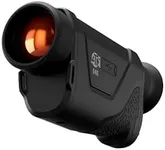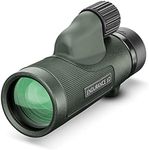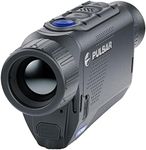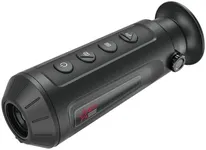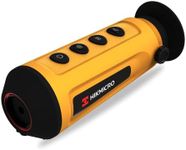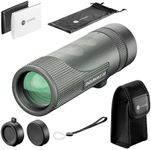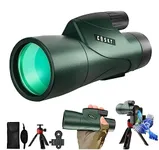Buying Guide for the Best Monoculars
When choosing a monocular, it's important to consider how and where you plan to use it. Monoculars are compact and portable, making them ideal for activities like hiking, bird watching, or attending sports events. The right monocular for you will depend on factors such as the level of magnification you need, the size and weight you are comfortable carrying, and any specific features that might enhance your viewing experience. Understanding the key specifications will help you make an informed decision and ensure that the monocular you choose meets your needs.MagnificationMagnification refers to how much closer the monocular can make an object appear. This is usually represented by a number followed by an 'x', such as 8x or 10x. Higher magnification means you can see further, but it can also make the image shakier and reduce the field of view. For general use, a magnification of 6x to 8x is often sufficient, providing a good balance between clarity and stability. If you need to see very distant objects, you might opt for 10x or higher, but be prepared for a narrower field of view and the potential need for a steady hand or tripod.
Objective Lens DiameterThe objective lens diameter, measured in millimeters, determines how much light the monocular can gather. A larger diameter means more light, resulting in a brighter and clearer image, especially in low-light conditions. Common sizes range from 20mm to 42mm. If you plan to use the monocular in dim lighting, such as at dawn or dusk, a larger objective lens (30mm or more) is beneficial. For daytime use, a smaller lens is usually adequate and makes the monocular more compact and lightweight.
Field of ViewField of view is the width of the area you can see through the monocular at a certain distance, usually measured in feet at 1000 yards. A wider field of view allows you to see more of the scene, which is useful for tracking moving objects or scanning large areas. If you're using the monocular for bird watching or sports, a wider field of view (around 300 feet or more) is advantageous. For stationary viewing or when focusing on specific details, a narrower field of view might suffice.
Weight and SizeThe weight and size of a monocular affect its portability and ease of use. Lightweight and compact models are easier to carry and handle, making them ideal for hiking or travel. However, they may have smaller lenses and lower magnification. Heavier models might offer better optics and features but can be cumbersome to carry for extended periods. Consider how you plan to use the monocular and choose a size and weight that you can comfortably manage.
Lens CoatingLens coating enhances light transmission and reduces glare, improving image quality. Coatings can range from single-layer to fully multi-coated lenses. Fully multi-coated lenses provide the best performance, offering brighter and clearer images. If image quality is a priority, look for monoculars with fully multi-coated lenses. For casual use, basic coatings might be sufficient, but they may not perform as well in challenging lighting conditions.
Waterproof and FogproofWaterproof and fogproof features protect the monocular from moisture and internal fogging, which can occur in humid or wet conditions. These features are important if you plan to use the monocular outdoors, especially in unpredictable weather. Look for models with O-ring seals and nitrogen or argon purging for reliable protection. If you expect to use the monocular primarily indoors or in dry conditions, these features might be less critical.
